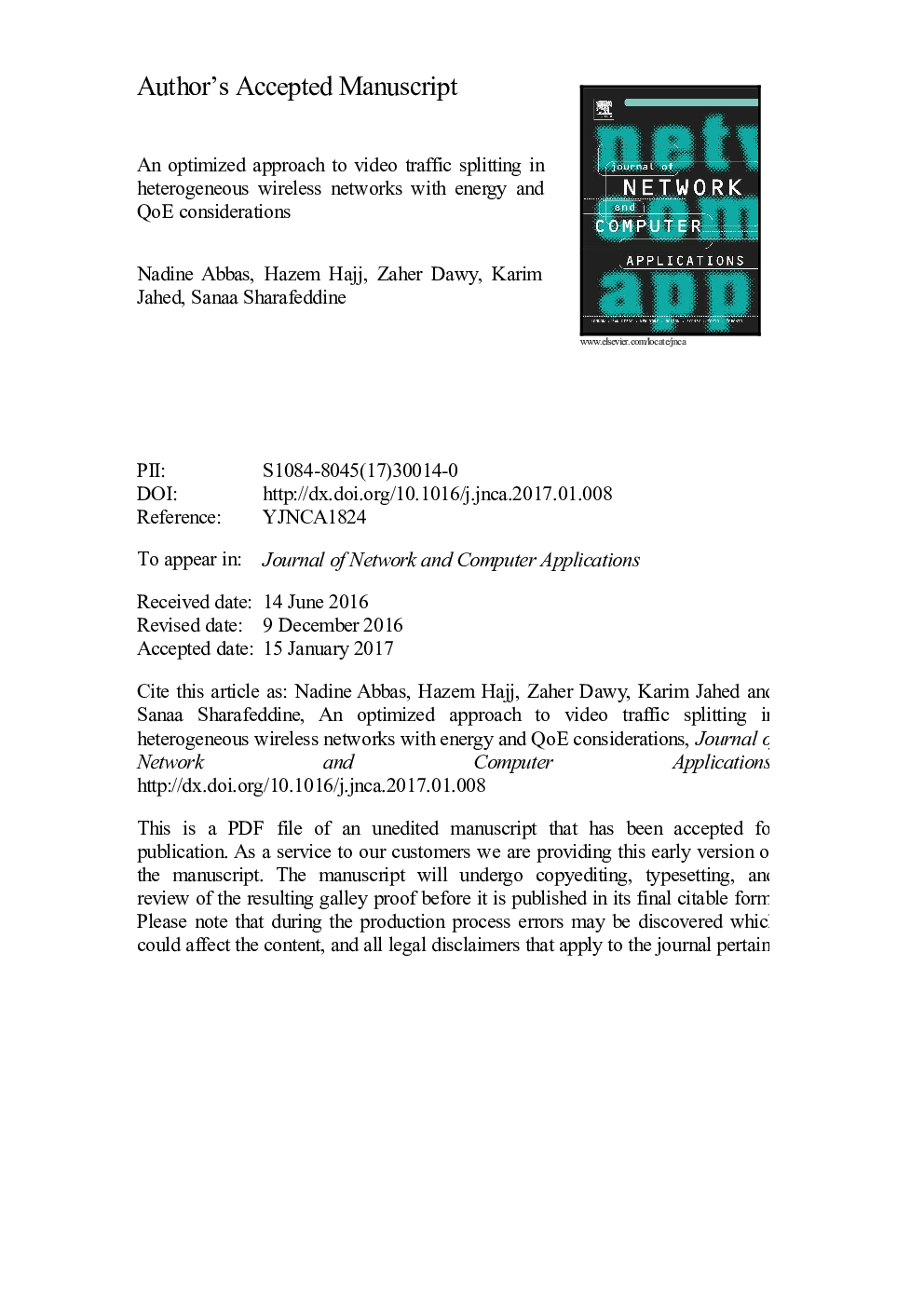| Article ID | Journal | Published Year | Pages | File Type |
|---|---|---|---|---|
| 4956015 | Journal of Network and Computer Applications | 2017 | 40 Pages |
Abstract
Due to the exploding traffic demands with the ubiquitous anticipated spread of 5G and Internet of Things, research has been active to devise mechanisms for meeting these demands while maintaining high quality user experience. In support of this direction, 3GPP is working towards cellular/WiFi interworking in heterogeneous networks to boost throughput, capacity, coverage and quality of experience. However, the continuous use of multiple wireless interfaces will increase the system performance but at the expense of more energy. As a result, there is a need for a dynamic use of multiple interfaces to provide a balance between energy consumption, throughput and user experience. Previous work in this field has considered improving throughput and reducing energy consumption, but did not consider simultaneously quality of experience as perceived by the end user. In this work, we aim at devising real-time traffic splitting strategies between WiFi and cellular networks to maximize user experience, reduce delay, and balance the needed energy consumption. We develop solutions for cellular/WiFi network resource management using Lyapunov drift-plus-penalty optimization approach. We evaluate the proposed approach using parameters determined via experimental measurements from mobile devices, and using our own test bed implementation to provide an evaluation under realistic operation conditions. Results show the performance effectiveness of the proposed traffic splitting approach in terms of throughput, delay, queue stability, energy consumption and quality of user experience by monitoring the frequency and lengths of video stalls.
Related Topics
Physical Sciences and Engineering
Computer Science
Computer Networks and Communications
Authors
Nadine Abbas, Hazem Hajj, Zaher Dawy, Karim Jahed, Sanaa Sharafeddine,
